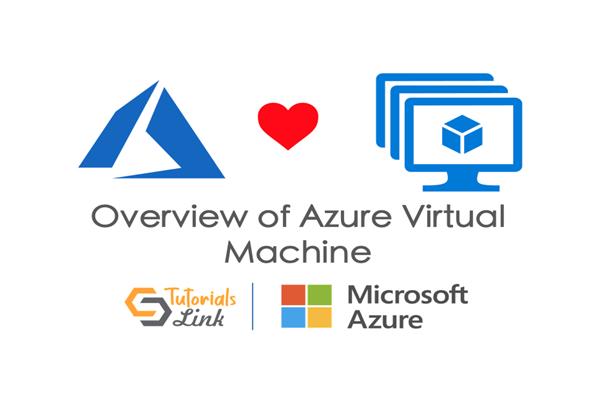Overview of Azure Virtual Machine
What is Azure Virtual Machine?
Azure Virtual Machine is an on-demand computer. It is a computer file that runs on the server. You can run multiple virtual machines on your physical computer. A virtual machine is the same as your physical computer, the virtual machine has it is own CPU, memory, hard drives and network interfaces. The virtual machine gives you the flexibility of virtualization without buying and maintaining the physical hardware that runs the virtual machines, all this physical hardware maintain by Microsoft Azure but still, you have to maintain configuring, patching, and installing the software that runs on a virtual machine. You choose a VM when you need more control over the computing environment than other choices offers. Azure offers both Linux and Windows virtual machines.
In a virtual machine, there are three main following parts:
Image: It deploys on your virtual machine like your OS.
Network: To communicate with internal and external services.
Storage: To keep the application data.
Why did Azure Virtual Machine require?
There multiple uses of creating a virtual machine, Virtual machines are deployed when the need for different operating systems and processing power are needed for different applications running simultaneously. You can use for development and testing your application as Azure VMs offer a quick and easy way to create a computer with specific configurations required to code and test an application. Its economic sense to run your application on VM in Azure as you pay for extra VMs when you need them and shut them down when you don’t. Concept of the extended datacenter that means Virtual machines in an Azure virtual network can easily be connected to your organization’s on-premises network.
While creating a new Azure virtual machine, there is a checklist you need to keep in mind.
- Create a network
Virtual networks are used to connectivity between Azure VMs and other azure services. Also, you can configure it to get access to the external services.
- Meaningful name of VM
The name should be meaningful that can easy to understand other for example we are creating a VM for deploying applications on the production environment, location is central India So the name of VM will be product-webvm01.
You can specify a name up to 15 characters for a Windows VM and 64 characters for Linux VM.
- Decide the location for the VM
When you create and deploy a VM, you must select location as close as possible your use to improve the performance.
- Determine the size of VM
There multiple different sizes of Azure VM based on CPU, GPU, and memory. Following table shows the size of VMs into use cases.
|
Type of VMs |
Common sizes |
Description |
|
General-purpose |
B, Dsv3, Dv3, DSv2, Dv2, Av2, DC |
Balanced CPU-to-memory. Ideal for dev/test and small to medium applications and data solutions. |
|
Compute-optimized |
Fsv2 |
High CPU-to-memory. Good for medium traffic applications, network appliances, and batch processes. |
|
Memory-optimized |
Esv3, Ev3, M, DSv2, Dv2 |
High memory-to-core. Great for relational databases, medium to large caches, and in-memory analytics. |
|
Storage optimized |
Lsv2, Ls |
High disk throughput and IO. Ideal for Big Data, SQL, and NoSQL databases. |
|
GPU |
NV, NVv2, NC, NCv2, NCv3, ND |
Specialized VMs targeted for heavy graphic rendering and video editing. |
|
High performance |
H |
Our most powerful CPU VMs with optional high-throughput network interfaces (RDMA). |
- Understanding the pricing model
There are two pricing model
- Pay as you go: You pay for computing capacity by the second, there is no long-term commitment.
- Reserved Virtual Machine Instances: In this option, you purchase a virtual machine for one or three years in advance.
- Storage for the VM
VM has one or more azure storage accounts to hold each attached virtual disk. When you create disks, it provides options for managing the relationship between the azure storage account and each virtual hard drives that correspond to your virtual machine disks.
- Unmanaged disks
- Managed Disks
- Selection of OS
Azure provides the various operating system images like Windows and Linux versions images that you can install in your Virtual Machine.
Apart from above there are lots of concepts in VM like how to encrypt your azure VMs disks, what are availability set, scale set, update domain, fault domain, etc. you can explore all these topics from Microsoft documents.
Hope this article will help you to understand Azure VMs.
Thanks





